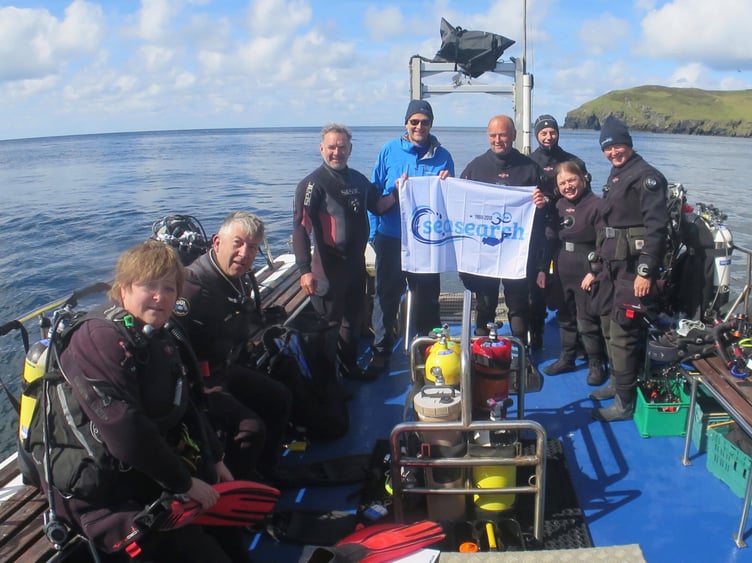As an island community we depend on the sea for so much - but it is also easy to take it for granted. In a monthly column, Dr Lara Howe, marine officer with the Manx Wildlife Trust, and Dr Peter Duncan, senior marine environment officer at DEFA, explore this underwater world and the lives of some of those who work there.
Seasearch is a national programme run by the Marine Conservation Society supporting volunteer divers and snorkels to work together for marine conservation.
The programme has been running on-island since 2005, with MWT taking over the co-ordination from Tony Glen, the inaugural co-ordinator, in 2021.
The aim of the project is to collect information about the habitats and species that live around our coastline, enabling us to monitor the health of our marine environment and any changes that may occur over time.
Most of the volunteers aren’t marine biologists but they all receive training to enable them to record accurately what they see in a standardised way.
This information can then help with management of our waters and the best ways to protect it.
Over 1,000 hours of underwater surveys are completed every year across Britain and Ireland and have contributed to almost 800,000 species records on the National Biodiversity Network (NBN) Atlas.
The data collected here in the island has also helped to designate our 10 Marine Nature Reserves.
Other examples of the great work undertaken by the volunteers includes accidently refinding a small snail that was thought to be extinct in the island.
The grooved topshell (Jujubinus striatus) was caught on camera by Tony Glen and Lara Howe back in 2020.
This tiny mollusc is only 10mm tall and was last recorded in the island by Edward Forbes, a Manx naturalist, in 1838. It is thought to be the most northerly sighting of this species, as it is typically found in the Mediterranean.
We are now seeing it throughout the Fort Island and Derbyhaven eelgrass meadows. We haven’t found it anywhere else…yet.
Another more recent find this year was by Sue Harvey, one of our snorkellers, who identified two new species of isopod (Dynamene bidentata and Jaera prachirsuta) from Castletown bay.
Another volunteer, Samantha Clarke found a huge number of juvenile stalked jellyfish (Haliclystus octoradiatus) in Niarbyl, which we all rushed to see. A rare find indeed.
They are very small, attaching to seaweed and other substrates making them difficult to spot but there were hundreds of them.
More recently, with the support of KPMG, two of our volunteers Richard Cowin and Mike Wilson have led the work on monitoring eelgrass meadows.
This has resulted in a dedicated team, known as MEG - Manx Eelgrass Group, being created.
Eelgrass is an important habitat for wildlife and for carbon sequestration, and working with DEFA we are gaining a better understanding of this vital habitat.
The initial focus has been in Derbyhaven bay, around Fort Island, where we have been mapping the beds in the area.
We now know of eight beds/patches, all of which vary in size. One as recently as last month was discovered by divers Leigh Morris and Lee Dixon. I suspect the more we look the more we will find.
The next step is to map the other four known beds around the island and to see if we can find some new areas too.
This crucial work wouldn’t be possible without our incredible volunteers so a massive thanks to everyone involved.
If you are interested in joining, contact Lara at MWT at [email protected] or for more information check out the Seasearch website www.seasearch.org.uk



.jpeg?width=209&height=140&crop=209:145,smart&quality=75)

Comments
This article has no comments yet. Be the first to leave a comment.